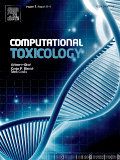
Computational Toxicology
Scope & Guideline
Transforming safety and efficacy with computational approaches.
Introduction
Aims and Scopes
- Quantitative Structure-Activity Relationship (QSAR) Modeling:
Utilizing mathematical and statistical techniques to predict the toxicity of chemical compounds based on their molecular structure, enabling risk assessment without extensive animal testing. - Adverse Outcome Pathways (AOPs):
Developing frameworks that describe the relationship between chemical exposure and adverse health effects, facilitating the understanding of mechanisms of toxicity. - Physiologically-Based Kinetic (PBK) Modeling:
Creating models that simulate the absorption, distribution, metabolism, and excretion (ADME) of chemicals in biological systems, aiding in the prediction of human and environmental exposure. - Machine Learning and Artificial Intelligence Applications:
Employing advanced computational techniques to enhance predictive accuracy in toxicology, including the classification of toxic effects and the identification of potential chemical hazards. - Nanotoxicology and Environmental Toxicology:
Investigating the toxicological implications of nanomaterials and environmental chemicals, focusing on their interactions with biological systems. - Chemical Safety Assessment and Regulatory Frameworks:
Supporting the integration of computational approaches into regulatory practices to ensure the safe use of chemicals in various industries.
Trending and Emerging
- Integration of Big Data and High-Throughput Screening:
The use of large datasets combined with high-throughput screening technologies is on the rise, enabling more comprehensive analyses of chemical toxicity and enhancing predictive models. - Development of New Approach Methodologies (NAMs):
There is a growing emphasis on NAMs, which utilize innovative in silico and in vitro methodologies to enhance the safety assessment process and reduce reliance on animal testing. - Focus on Environmental and Human Health Risk Assessment:
Emerging themes include the assessment of environmental chemicals and their impact on human health, especially in light of increased regulatory scrutiny. - Personalized Toxicology and Risk Assessment:
The incorporation of genetic and biological variability in toxicity assessments is becoming more prevalent, facilitating personalized approaches to toxicological risk management. - Advancements in Computational Methods for Mixture Toxicology:
Research is increasingly addressing the complexities of chemical mixtures and their combined effects, reflecting a more holistic approach to toxicology.
Declining or Waning
- Traditional In Vivo Toxicology Studies:
There is a noticeable reduction in reliance on traditional animal testing methods as computational approaches gain traction, reflecting a broader acceptance of in silico predictions. - Basic Toxicity Screening Methods:
Basic screening methods that do not leverage advanced computational techniques are becoming less prominent, as more sophisticated models provide better predictive capabilities. - Single Endpoint Toxicity Assessments:
The shift towards integrated approaches that consider multiple endpoints and mechanisms of action has led to a decline in the publication of studies focused solely on single toxicity endpoints.
Similar Journals

Food Additives and Contaminants Part A-Chemistry Analysis Control Exposure & Risk Assessment
Exploring the chemistry behind food safety and public health.Food Additives and Contaminants Part A-Chemistry Analysis Control Exposure & Risk Assessment, published by Taylor & Francis Ltd, is a leading journal in the field of food science, toxicology, and public health. With an ISSN of 1944-0049 and an E-ISSN of 1944-0057, this esteemed publication has established itself as a vital resource for researchers and professionals involved in the analysis and regulation of food additives and contaminants. Since its inception and through its converged years from 2008 to 2012 and again from 2014 to 2023, the journal has maintained an impactful presence, notably achieving a Q2 ranking in diverse categories including Chemistry (miscellaneous) and Food Science, alongside commendable standings in Health and Environmental Health. The journal’s mission is to foster high-quality research by providing a platform for critical studies related to chemical analysis, exposure assessments, and risk management in food safety. By prioritizing engaging, peer-reviewed content, it aims to enhance understanding and mitigate risks associated with food additives, making it an indispensable tool for academics, practitioners, and policymakers alike.

TOXICOLOGY MECHANISMS AND METHODS
Fostering critical discourse in toxicology and risk assessment.TOXICOLOGY MECHANISMS AND METHODS is a distinguished peer-reviewed journal dedicated to the advancement of toxicological research, published by Taylor & Francis Ltd. With its ISSN 1537-6516 and E-ISSN 1537-6524, this esteemed journal features critical studies and innovative methodologies in the field of toxicology, aligning with its mission to enhance understanding of biological mechanisms and risk assessment. The journal holds a commendable Q2 ranking in both the Health, Toxicology and Mutagenesis, and Toxicology categories, as well as strong positions in Scopus rankings, reflecting its influence with a 71st percentile rank in Toxicology and a 69th percentile rank in Environmental Health. Researchers, professionals, and students in the toxicology domain will find this journal to be an invaluable resource, offering open access options that foster widespread dissemination of its findings. Since its inception, encompassing converged years from 1991 to 1995 and from 2002 to 2024, the journal remains at the forefront of critical discourse and innovative research methods, making it a vital platform for advancing toxicological science globally.
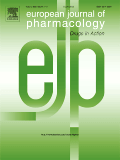
European Journal of Pharmacology
Advancing drug discovery through innovative research.The European Journal of Pharmacology, a prestigious publication by Elsevier, serves as a vital resource in the field of pharmacology, offering rich insights into drug development and therapeutic applications. Since its inception in 1967, this journal has evolved to encompass groundbreaking research, including pharmacokinetics, toxicology, and innovative pharmacological methodologies, making it an essential platform for researchers and professionals alike. With an impressive impact factor that places it in the Q1 category of pharmacological journals and a Scopus ranking of #49 out of 313, the journal is recognized in the 84th percentile within its category, solidifying its significance in the academic community. Although the journal is not open access, it continues to attract contributions from leading scientists worldwide, ensuring that cutting-edge findings are disseminated effectively. The European Journal of Pharmacology not only highlights advancements in drug discovery and clinical applications but also promotes interdisciplinary collaboration, ultimately contributing to the progress of healthcare globally.
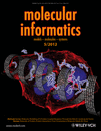
Molecular Informatics
Bridging Computational Techniques with Biological InnovationMolecular Informatics is a prestigious journal published by WILEY-V C H VERLAG GMBH, dedicated to advancing the fields of computational analysis and molecular modeling. As a key resource in the realms of Computer Science Applications, Drug Discovery, Molecular Medicine, Organic Chemistry, and Structural Biology, this journal is recognized for its significant contributions and is ranked in the Q2 and Q3 categories across multiple disciplines, positioning it among the leading journals for researchers and academics. With an impressive track record since its inception in 2010 and converging its contributions until 2024, Molecular Informatics aims to bridge the gap between computational techniques and biological applications, promoting interdisciplinary collaboration and innovation. Accessible to a global audience, the journal reflects a commitment to advancing science through open access options, making cutting-edge research available to students, professionals, and decision-makers alike. This journal serves as an indispensable platform for disseminating high-quality research and fostering the development of new theoretical and practical frameworks in molecular informatics.
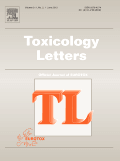
TOXICOLOGY LETTERS
Fostering collaboration to combat chemical hazards.TOXICOLOGY LETTERS is a prominent journal dedicated to advancing the field of toxicology, providing a platform for high-quality research and reviews that explore the effects of chemical substances on biological systems. Published by Elsevier Ireland Ltd, this peer-reviewed journal has established itself as a vital resource in toxicological research since its inception in 1977, with a convergence of studies extending to 2024. With an impressive Scopus ranking, positioned at #28 out of 133 in the Toxicology category, TOXICOLOGY LETTERS garners a respectable percentile of 79, highlighting its significance in the academic community. Although it is not an open-access journal, its research is accessible through institutional subscriptions, ensuring that critical insights into human health and environmental safety are disseminated effectively. Being categorized in the Q2 quartile in both Medicine (miscellaneous) and Toxicology for 2023 further emphasizes its relevance and impact in these fields. This journal aims to foster collaboration between researchers and professionals, encouraging the exploration of innovative solutions to chemical hazards and the promotion of safer practices in pharmacology and toxicology.
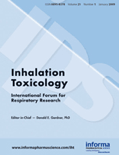
INHALATION TOXICOLOGY
Exploring the Impact of Inhaled Toxins on Health.Inhalation Toxicology, published by Taylor & Francis Ltd, is a premier journal dedicated to advancing the field of toxicology with a particular focus on inhalation exposure and its impact on human health. Established in 1989, this journal provides a vital platform for original research, reviews, and case studies that explore the toxicological effects of inhaled substances, making it essential reading for researchers, health professionals, and regulatory scientists. With an Impact Factor that situates it in the Q3 category in both Health, Toxicology and Mutagenesis, the journal asserts its relevance within the scientific community, particularly emphasizing its contributions as indexed by Scopus rankings in related fields. Although it follows a traditional access model, the journal's commitment to delivering high-quality research continues to foster significant discussions and advancements in understanding inhalation toxicology. For those at the forefront of environmental science and pharmacology, Inhalation Toxicology is an indispensable resource for both current research and future innovations in the discipline.

SAR AND QSAR IN ENVIRONMENTAL RESEARCH
Pioneering the Path from Structure to Environmental Impact.SAR and QSAR in Environmental Research is a leading journal published by Taylor & Francis Ltd, focusing on the integration of Structure-Activity Relationships (SAR) and Quantitative Structure-Activity Relationships (QSAR) within the realm of environmental science. Since its inception in 1993, the journal has been a pivotal platform for disseminating innovative research that bridges the gap between chemistry and environmental sustainability, ranking in the Q3 quartile for Bioengineering, Drug Discovery, and miscellaneous Medicine categories as of 2023. Featuring a compelling collection of peer-reviewed articles, it caters to academic and professional audiences seeking to enhance their understanding of molecular interactions and their implications for environmental health. Although the journal does not currently offer Open Access options, its rigorous editorial standards ensure high-quality, impactful publications that are crucial for advancing methodologies in pharmacology, toxicology, and bioengineering. With an ISSN of 1062-936X and an E-ISSN of 1029-046X, SAR and QSAR in Environmental Research continues to serve as an essential resource for researchers, academics, and practitioners dedicated to innovative approaches in environmental research.

TOXICOLOGY AND APPLIED PHARMACOLOGY
Navigating the Nexus of Safety and EfficacyTOXICOLOGY AND APPLIED PHARMACOLOGY, published by Academic Press, Inc. Elsevier Science, stands as a leading journal in the domains of toxicology and pharmacology, with its establishment dating back to 1959. With an impact factor reflecting its academic rigor and relevance, this journal is classified in the Q2 quartile for both pharmacology and toxicology categories, underscoring its significance in the scientific community. It ranks #34 out of 133 in Toxicology and #95 out of 313 in Pharmacology according to Scopus, placing it within the 74th and 69th percentiles, respectively. The journal aims to disseminate quality research that drives advancements in understanding the interactions of drugs and toxic substances within biological systems. Researchers and professionals are invited to contribute and engage with a broad spectrum of articles that cover mechanistic studies, risk assessment, and innovative therapeutic strategies. Although the journal does not offer open access, it continues to be a crucial resource for those who seek to navigate the complex interface of drugs and their toxicological implications.
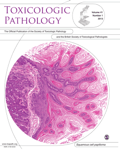
TOXICOLOGIC PATHOLOGY
Connecting Academia and Industry in Toxicologic PathologyTOXICOLOGIC PATHOLOGY, published by SAGE Publications Inc., is a dedicated journal that serves as a pivotal platform for researchers and professionals in the fields of toxicology and pathology. With an ISSN of 0192-6233 and E-ISSN of 1533-1601, the journal has been committed to advancing knowledge since its inception in 1972. It boasts impressive rankings in the recent 2023 category quartiles, achieving Q2 in Pathology and Forensic Medicine, and Q3 in Cell Biology, Molecular Biology, and Toxicology, marking it as a significant contributor to these vital disciplines. Despite its non-open access status, the journal ensures accessibility through various premium library subscriptions, providing readers with essential insights on toxicologic and pathologic research, advancing both academic inquiry and practical applications. Researchers, students, and industry professionals alike will find TOXICOLOGIC PATHOLOGY an indispensable resource, offering high-quality peer-reviewed articles that explore the complex interactions between substances and biological systems, with the aim of improving public health and safety.
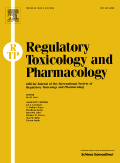
REGULATORY TOXICOLOGY AND PHARMACOLOGY
Advancing the Frontiers of Drug Safety and ToxicologyREGULATORY TOXICOLOGY AND PHARMACOLOGY is a prestigious peer-reviewed journal published by Academic Press Inc. Elsevier Science, dedicated to advancing knowledge in the fields of toxicology and pharmacology. With an esteemed impact factor and a current ranking of Q2 in both Medicine and Toxicology, this journal serves as a critical resource for researchers, professionals, and students interested in the regulatory aspects of drug safety and environmental toxicology. The journal publishes original research articles, reviews, and regulatory updates that reflect the latest insights and methodologies in safety assessment and toxicological research. Established in 1970, the journal continues to play an integral role in shaping the scientific discourse around regulatory practices in pharmacology, ensuring that both academic and practical perspectives are captured. Readers can access the articles through subscription services, allowing them to stay informed of the most significant developments in the field.